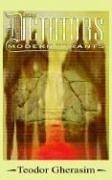| Listing 1 - 10 of 201 | << page >> |
Sort by
|

ISBN: 1425913571 Year: 2006 Publisher: Bloomington, IN : AuthorHouse,
Abstract | Keywords | Export | Availability | Bookmark
 Loading...
Loading...Choose an application
- Reference Manager
- EndNote
- RefWorks (Direct export to RefWorks)
Book
ISBN: 9782757851241 2757851241 Year: 2015 Publisher: Paris: Seuil,
Abstract | Keywords | Export | Availability | Bookmark
 Loading...
Loading...Choose an application
- Reference Manager
- EndNote
- RefWorks (Direct export to RefWorks)
A l'origine, la dictature est une institution de la République romaine. Le dictateur reçoit la mission de rétablir l'ordre républicain dans un temps limité à six mois. La dictature "souveraine", spécifiquement moderne, est quant à elle illimitée et vise à créer un nouvel ordre. L'ouvrage de Schmitt n'est pas seulement une remarquable analyse historique des usages de cette institution destinée à faire face à l'état d'exception. Si l'expérience ultérieure du XXe siècle a disqualifié la notion de dictature, l'interrogation sur les situations où l'Etat de droit est confronté à ses limites n'a rien perdu de son actualité : les mesures "antiterroristes" aussi bien que les difficiles "transitions" consécutives au renversement d'autocraties militaires en attestent aujourd'hui.
Book
Year: 1935 Publisher: Paris : Les Éditions Denoël et Steele,
Abstract | Keywords | Export | Availability | Bookmark
 Loading...
Loading...Choose an application
- Reference Manager
- EndNote
- RefWorks (Direct export to RefWorks)
Book
ISBN: 9781590174982 1590174984 Year: 2012 Publisher: New York New York Review Books
Abstract | Keywords | Export | Availability | Bookmark
 Loading...
Loading...Choose an application
- Reference Manager
- EndNote
- RefWorks (Direct export to RefWorks)
The first great twentieth-century novel of dictatorship, and the avowed inspiration for Garca Mrquez's The Autumn of the Patriarch and Roa Bastos's I, the Supreme, Tyrant Banderas is a dark and dazzling portrayal of a mythical Latin American Republic in the grip of a monster.
Book
ISBN: 9789049103330 Year: 2010 Publisher: Tielt Houten Lannoo Spectrum
Abstract | Keywords | Export | Availability | Bookmark
 Loading...
Loading...Choose an application
- Reference Manager
- EndNote
- RefWorks (Direct export to RefWorks)
Book
ISBN: 149760611X Year: 2014 Publisher: New York, NY : Open Road Integrated Media, Inc.,
Abstract | Keywords | Export | Availability | Bookmark
 Loading...
Loading...Choose an application
- Reference Manager
- EndNote
- RefWorks (Direct export to RefWorks)
Paranoid but almighty, the sorcerer Xinixo had seized control of the Impire. But ruling the imps and most of the world was not enough. He would never feel safe until he was universally loved, so he would smash everything and then rebuild the whole world in his own insane image. Who could resist him? King Rap of Krasnegar and Shandie, the rightful imperor, were still at large and determined to resist the evil, however slender their chances. Their one, faint hope was to enlist the help of the remaining free sorcerers of the world, those not already spellbound by Xinixo. Their quest soon ran into
Book
ISBN: 9781456809706 1456809709 Year: 2011 Publisher: United States : Xlibris,
Abstract | Keywords | Export | Availability | Bookmark
 Loading...
Loading...Choose an application
- Reference Manager
- EndNote
- RefWorks (Direct export to RefWorks)
Dictators --- Corruption --- Corruption. --- Dictators.
Book
ISBN: 0289704316 Year: 1973 Publisher: London Studio Vista
Abstract | Keywords | Export | Availability | Bookmark
 Loading...
Loading...Choose an application
- Reference Manager
- EndNote
- RefWorks (Direct export to RefWorks)
Book
ISBN: 9781107115828 9781316336182 9781107535954 Year: 2018 Publisher: Cambridge Cambridge University Press
Abstract | Keywords | Export | Availability | Bookmark
 Loading...
Loading...Choose an application
- Reference Manager
- EndNote
- RefWorks (Direct export to RefWorks)
This volume shines a light on how autocracy really works by providing basic facts about how post-World War II dictatorships achieve, retain, and loose power. The authors present an evidence-based portrait of key features of the authoritarian landscape with newly collected data on about 200 dictatorial regimes. They examine the central political processes that shape the policy choices of dictatorships and how they compel reaction from policy makers in the rest of the world. Importantly, this book explains how some dictators concentrate great power in their own hands at the expense of other members of the dictatorial elite. Dictators who can monopolize decision-making in their countries cause much of the erratic, warlike behavior that disturbs the rest of the world. By providing a picture of the central processes common to dictatorships, this book puts the experience of specific countries in perspective, leading to an informed understanding of events and the likely outcome of foreign responses to autocracies.
Book
Year: 1930 Publisher: Tübingen: Mohr,
Abstract | Keywords | Export | Availability | Bookmark
 Loading...
Loading...Choose an application
- Reference Manager
- EndNote
- RefWorks (Direct export to RefWorks)
| Listing 1 - 10 of 201 | << page >> |
Sort by
|

 Search
Search Feedback
Feedback About UniCat
About UniCat  Help
Help News
News